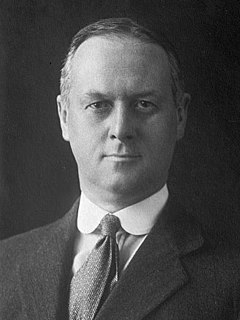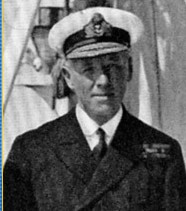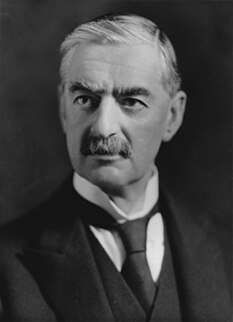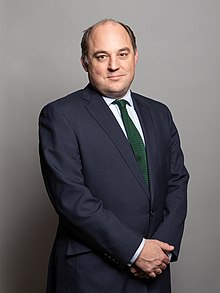
The Air Ministry was a department of the Government of the United Kingdom with the responsibility of managing the affairs of the Royal Air Force, that existed from 1918 to 1964. It was under the political authority of the Secretary of State for Air.

The Cabinet of the United Kingdom is a group in the government of the United Kingdom, consisting of the highest ranking ministers of the Crown. A committee of the Privy Council, its members include the holders of the four Great Offices of State, including the prime minister, who chairs the Cabinet. Other members include the principal secretaries of state who each head the government departments.

Her Majesty's Principal Secretary of State for Scotland, also referred to as the Secretary of State for Scotland or the Scottish Secretary, is the secretary of state and principal government minister for Scotland in the Cabinet of Her Majesty's Government of the United Kingdom of Great Britain and Northern Ireland. The Scottish Secretary heads the Scotland Office, a government department based in London and Edinburgh.

The Secretary of State for Environment, Food and Rural Affairs, also referred to as the Environment Secretary, is a British Cabinet level position, in charge of the Department for Environment, Food and Rural Affairs, and the successor to the positions of Minister of Agriculture, Fisheries and Food and Secretary of State for the Environment, Transport and the Regions.
The Minister of Agriculture, Fisheries and Food was a United Kingdom cabinet position, responsible for the Ministry of Agriculture, Fisheries and Food. The post was originally named President of the Board of Agriculture and was created in 1889. In 1903, an Act was passed to transfer to the new styled Board of Agriculture and Fisheries certain powers and duties relating to the fishing industry, and the post was renamed President of the Board of Agriculture and Fisheries.

The Secretary of State for Justice, also referred to as the Justice Secretary, is a senior Minister of the Crown within the Government of the United Kingdom, and head of the Ministry of Justice. The office forms part of the British Cabinet. Since it was created, the Justice Secretary also holds the office of Lord Chancellor in conjunction.
A war cabinet is a committee formed by a government in a time of war. It is usually a subset of the full executive cabinet of ministers. It is also quite common for a war cabinet to have senior military officers and opposition politicians as members.
The Order of precedence in New Zealand is a guide to the relative seniority of constitutional office holders and certain others, to be followed, as appropriate at State and official functions. The previous order of precedence is revoked and Her Majesty The Queen approved the following Order of Precedence in New Zealand effective 20 September 2018:
- The Queen of New Zealand.
- The Governor-General or, while acting in the place of the Governor-General, the officer administering the Government
- The Prime Minister.
- The Speaker of the House of Representatives
- The Chief Justice
- The Dean of the Diplomatic Corps
- The Deputy Prime Minister
- Ministers of the Crown
- Former Governors-General
- Ambassadors and High Commissioners in New Zealand and Chargés d’Affaires accredited to New Zealand.
- The Leader of the Opposition in the House of Representatives
- Leaders, including co-leaders and joint leaders, of political parties represented in the House of Representatives, other than Ministers of the Crown.
- Members of the House of Representatives. There is no established order of precedence over members of parliament in general, although each party has its internal ranking.
- Judges of the Supreme Court of New Zealand, the Court of Appeal and the High Court of New Zealand.
- Former Prime Ministers, former Speakers of the House of Representatives, former Chief Justices, and members of the Privy Council.
- Mayors of territorial authorities and chairpersons of regional councils, while in their own cities, districts and regions. In 1989, boroughs and counties were amalgamated into district councils. District mayors, and the Chatham Islands mayor could expect to be accorded this same precedence.
- The Public Service Commissioner, Chief of Defence Force, Commissioner of Police, and Officers of Parliament .
- The Solicitor-General, Clerk of the House of Representatives, and Clerk of the Executive Council when attending a function involving the exercise of the position’s specific responsibilities.
- Chief executives of public service and non-public service departments.
- The Vice Chief of Defence Force, and Chiefs of Navy, Army and Air Force, and other statutory office holders.
- Consuls-General and Consuls of countries without diplomatic representation in New Zealand.
- Members of New Zealand and British orders, and holders of decorations and medals in accordance with the Order of Wear in New Zealand.

Thomas Walker Hobart Inskip, 1st Viscount Caldecote, was a British politician who served in many legal posts, culminating in serving as Lord Chancellor from 1939 until 1940. Despite legal posts dominating his career for all but four years, he is most prominently remembered for serving as Minister for Coordination of Defence from 1936 until 1939.

The position of Minister for Coordination of Defence was a British Cabinet-level position established in 1936 to oversee and co-ordinate the rearmament of Britain's defences.
The National Government of 1937–1939 was formed by Neville Chamberlain on his appointment as Prime Minister of the United Kingdom by King George VI. He succeeded Stanley Baldwin, who announced his resignation following the coronation of the King and Queen in May 1937.

Neville Chamberlain formed the Chamberlain war ministry in 1939 after declaring war on Germany. Chamberlain led the country for the first eight months of the Second World War, until the Norway Debate in Parliament led Chamberlain to resign and Winston Churchill to form a new ministry.

The Secretary of state for Housing, communities, and Local government, also referred to as the Communities Secretary, is a Cabinet position heading the UK's Ministry of Housing, Communities and Local Government, previously known as the Department for Communities and Local Government from 2006 to 2018.

Victor Alexander George Anthony Warrender, 1st Baron Bruntisfield, MC, known as Sir Victor Warrender, Bt, between 1917 and 1942, was a British Conservative politician. He held minor political office between 1928 and 1945, notably as Parliamentary and Financial Secretary to the Admiralty from 1940 to 1945 in Winston Churchill's war-time coalition government. In 1942 he was ennobled as Baron Bruntisfield.
James Edward Ramsden was a British Conservative politician. He was the last person to hold the office of Secretary of State for War.

The Churchill war ministry was the United Kingdom's coalition government for most of the Second World War from 10 May 1940 to 23 May 1945. It was led by Winston Churchill, who was appointed Prime Minister by King George VI following the resignation of Neville Chamberlain in the aftermath of the Norway Debate.

The 1945 Prime Minister's Resignation Honours were announced on 14 August 1945 to mark the resignation of the Prime Minister, Winston Churchill, following the success of the Labour Party in the 1945 General Election.

The 2010 Dissolution Honours List was issued on 28 May 2010 at the advice of the outgoing Prime Minister, Gordon Brown. The list was gazetted on 15 June. Keith Hill was offered but declined a knighthood, saying he would find the title "embarrassing".

The first Johnson ministry began on 24 July 2019 when Queen Elizabeth II invited Boris Johnson to form a new administration, following the resignation of the previous Prime Minister Theresa May. May had resigned as Leader of the Conservative Party on 7 June 2019; Johnson was elected as her successor on 23 July 2019. The Johnson ministry was formed from the 57th Parliament of the United Kingdom, as a Conservative minority government. It lost its working majority on 3 September 2019 when Tory MP Dr Phillip Lee crossed the floor to the Liberal Democrats. An election was called for 12 December 2019, which led to the formation of a Conservative majority government, the second Johnson ministry.

The Minister of Defence for the Royal Navy was a senior ministerial appointment of the British Government established in April 1964. The office holder was the ministerial head of the Navy Department of the Ministry of Defence, and reported to the Secretary of State for Defence.






































